Abstract
Six normally capable adults first learned three conditional relations in each of two prospective equivalence classes via match-to-sample training with figures as conditional (sample) and discriminative (comparison) stimuli. Then one trained conditional relation in each prospective class was brought under the control of contextual stimuli, two dictated nonsense syllables. Test performances indicated the emergence of untrained conditional relations, and therefore two equivalence classes, that were conditional on the contextual stimuli. These tests involved untrained combinations of contextual stimuli and stimuli in conditional relations, suggesting that the contextual stimuli functioned independently to control conditional relations rather than forming compound stimuli with samples and comparisons in training. Next, two novel figures were made equivalent to each of the original dictated contextual stimuli by match-to-sample training and testing. On subsequent tests, all subjects demonstrated transfer of conditional control of untrained conditional relations from the original auditory contextual stimuli to equivalent visual stimuli. These outcomes further supported the conclusion that the contextual stimuli exerted true conditional control over conditional relations in the equivalence classes and were not merely elements of compound stimuli.
Full text
PDF
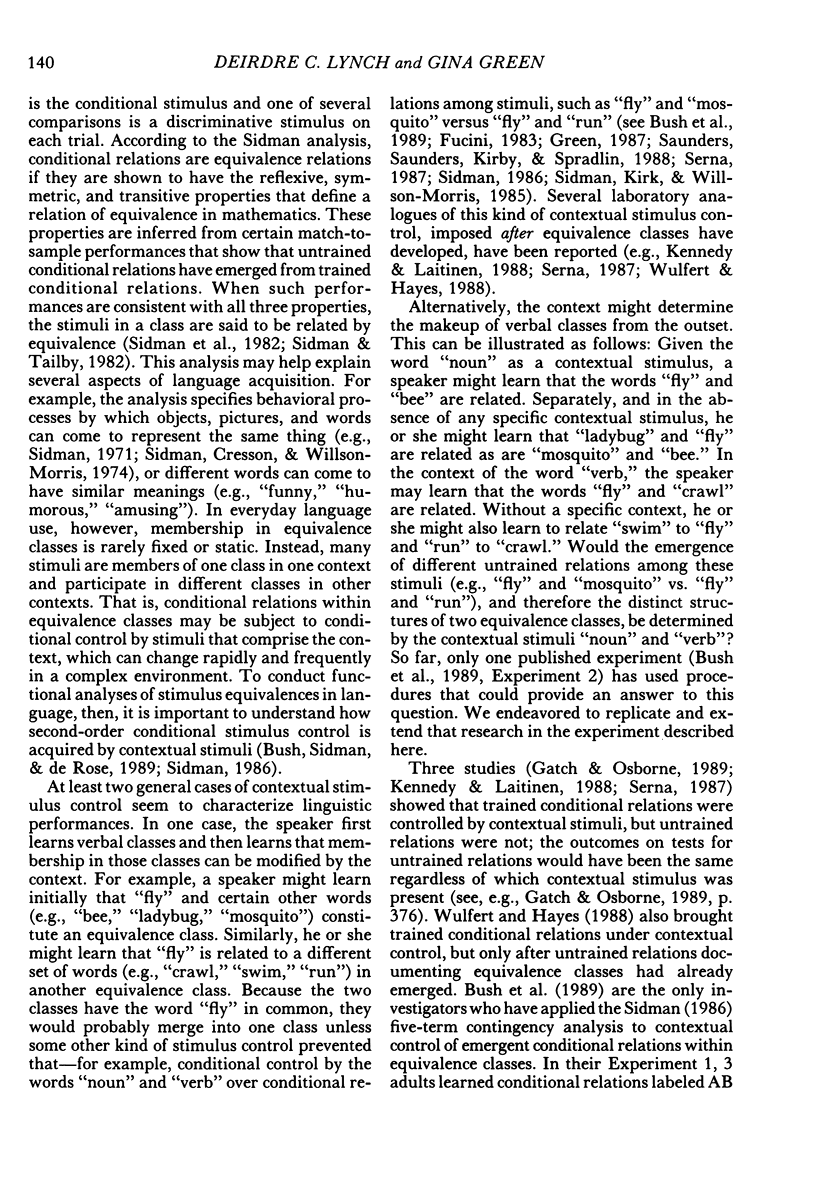
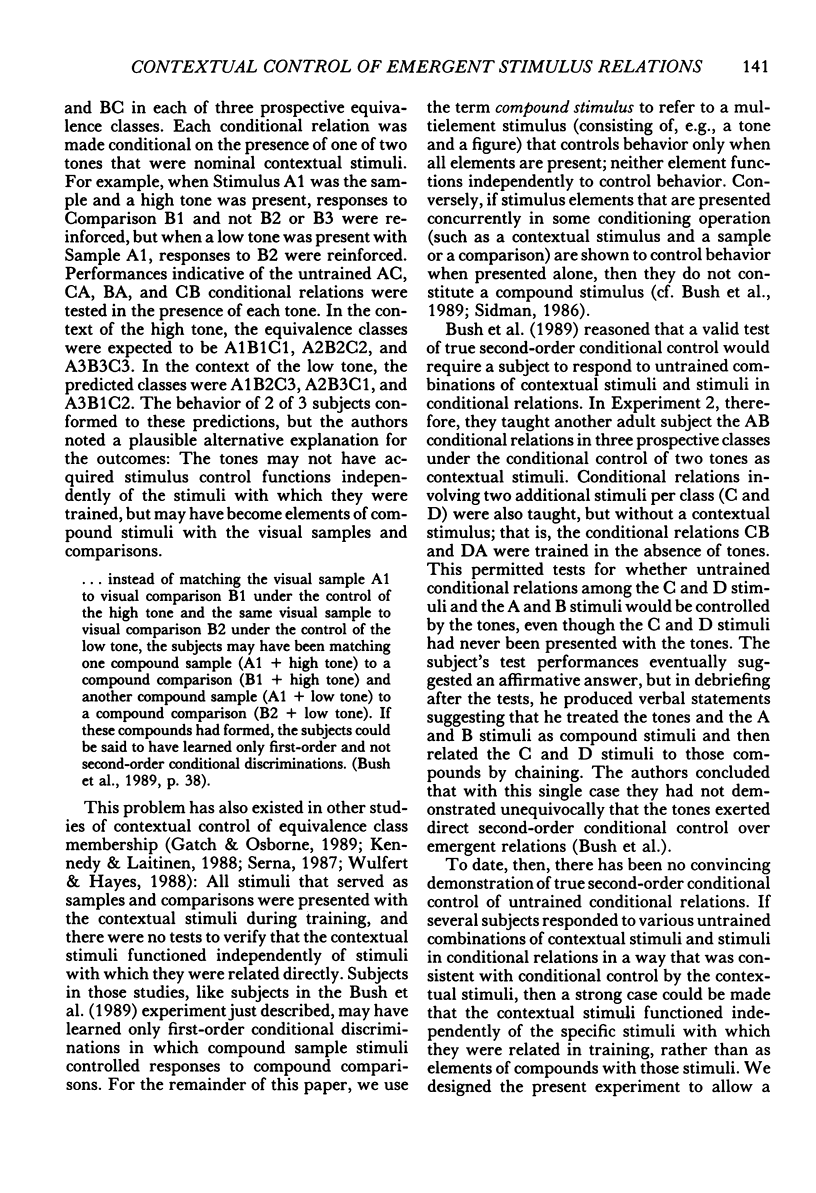
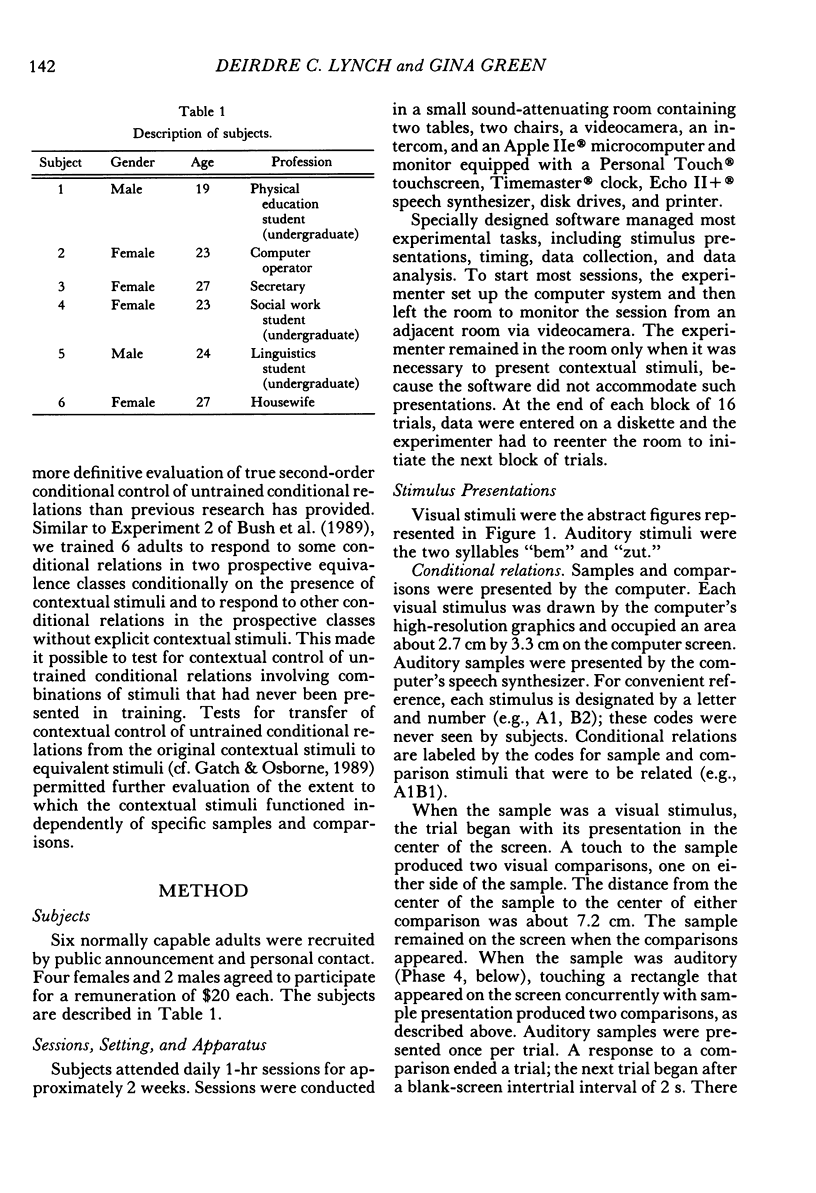



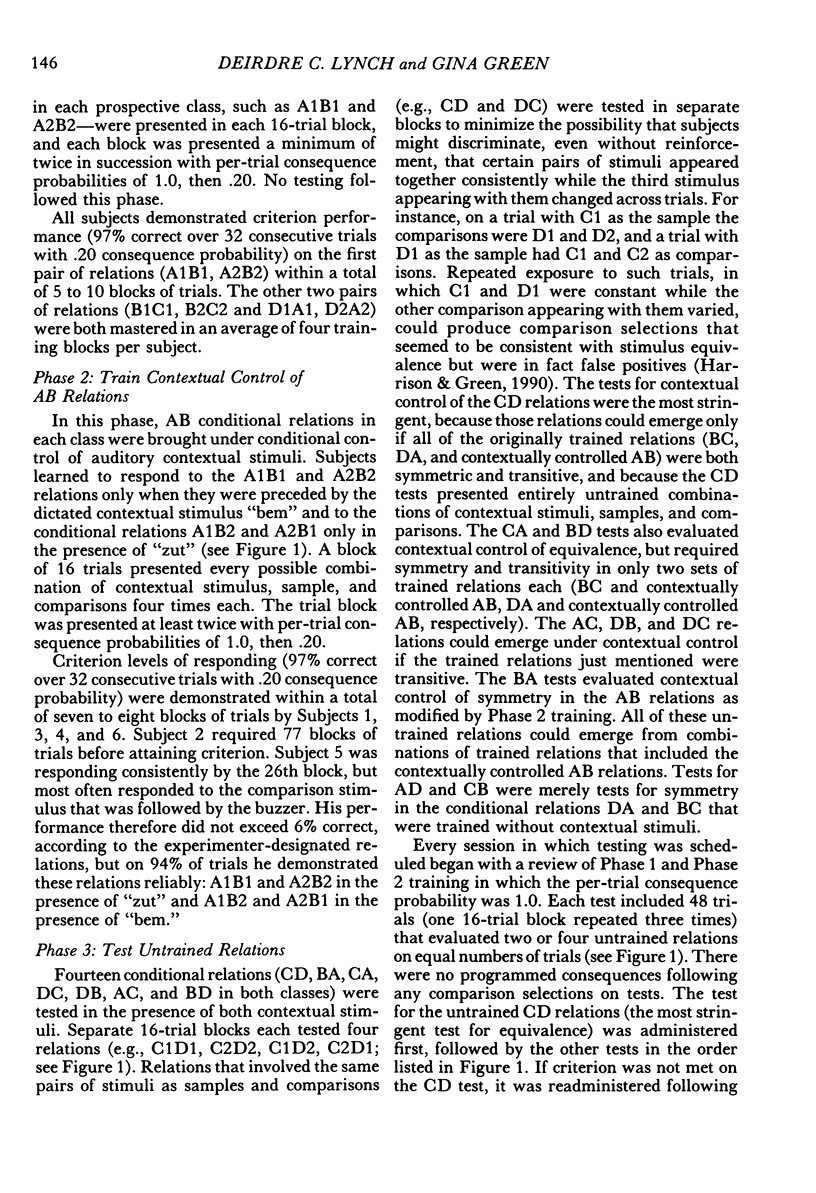
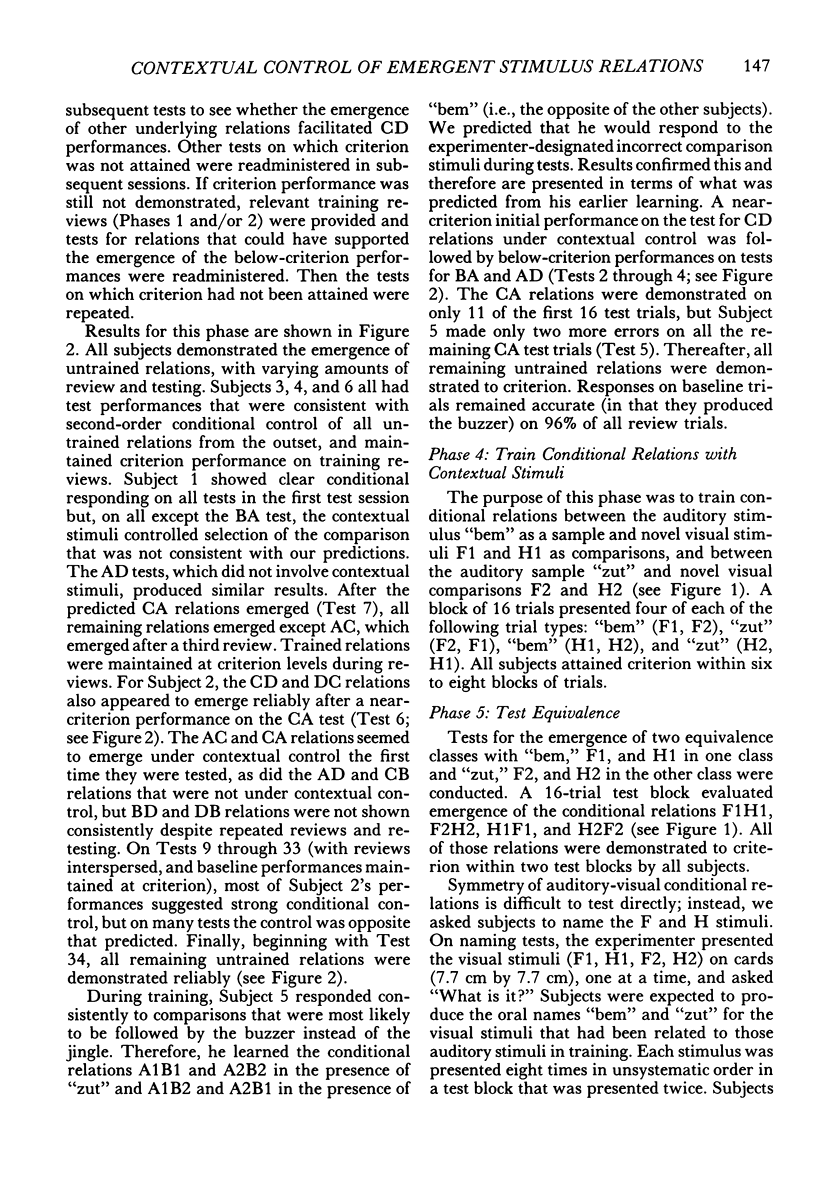
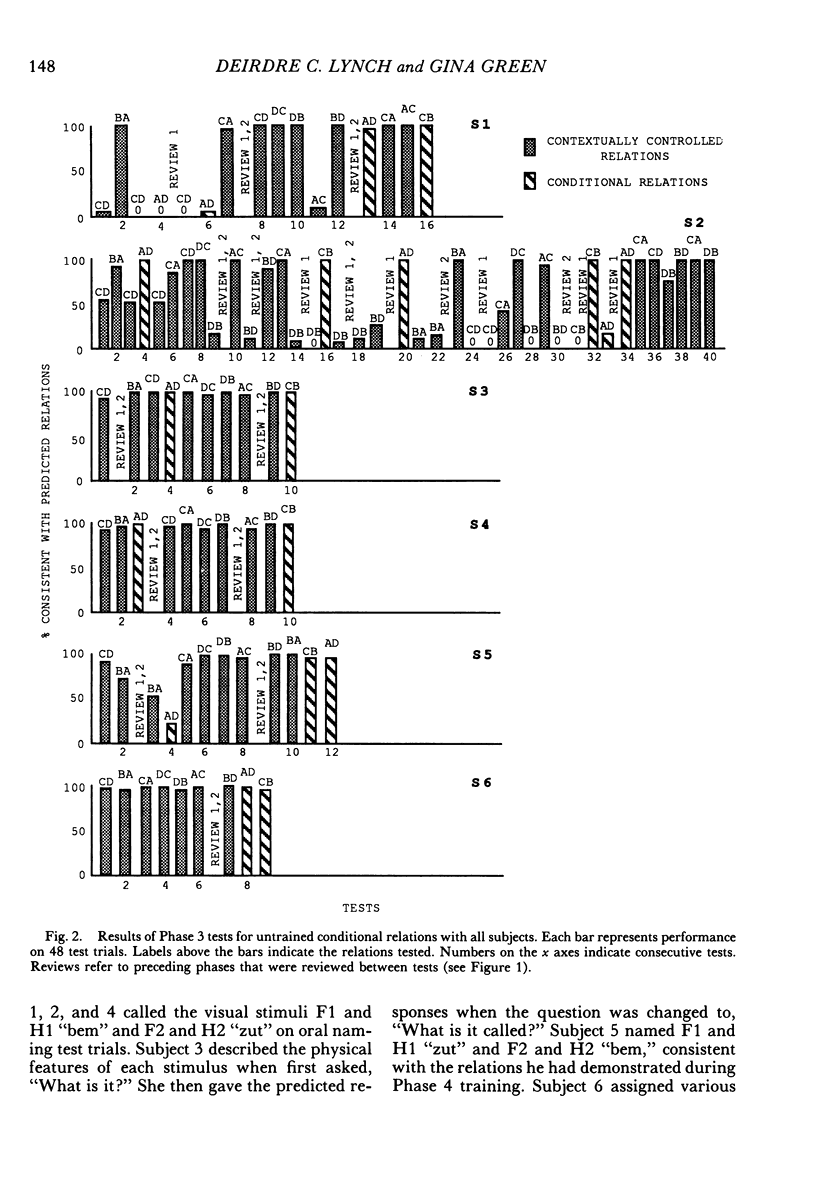
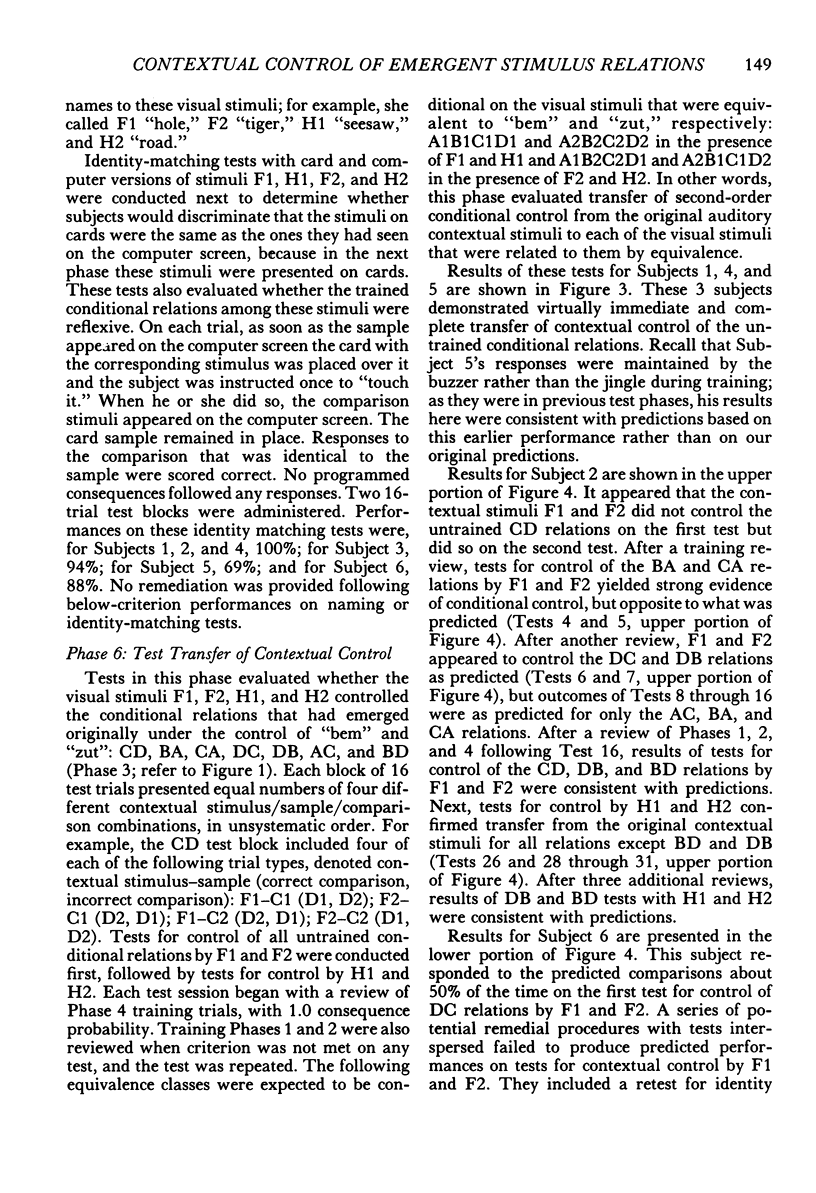
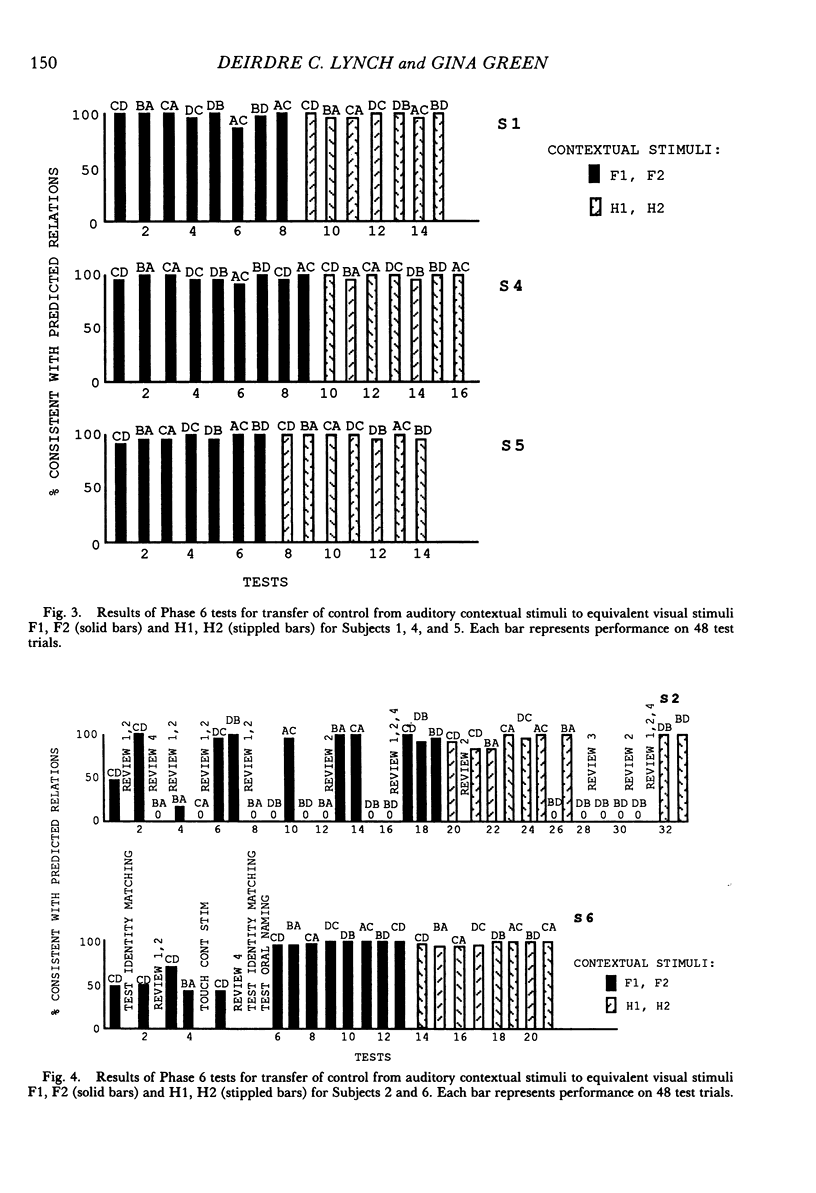
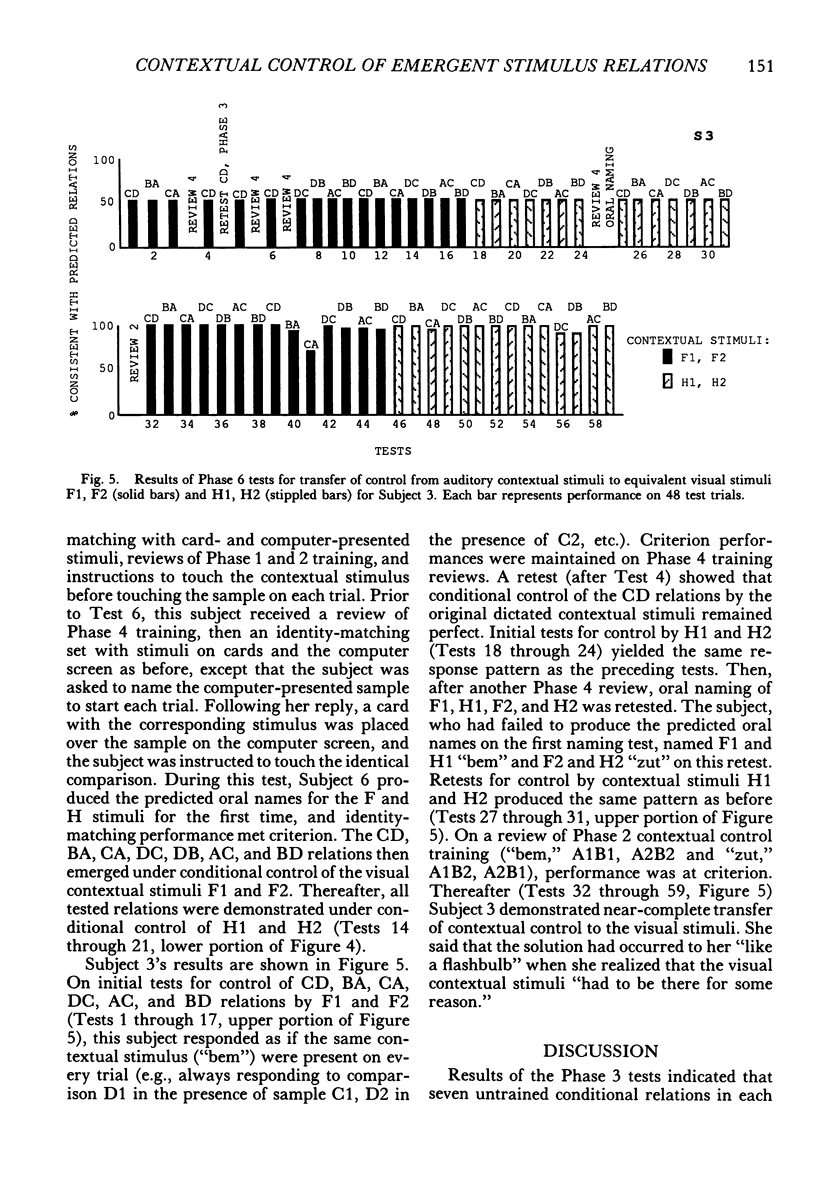
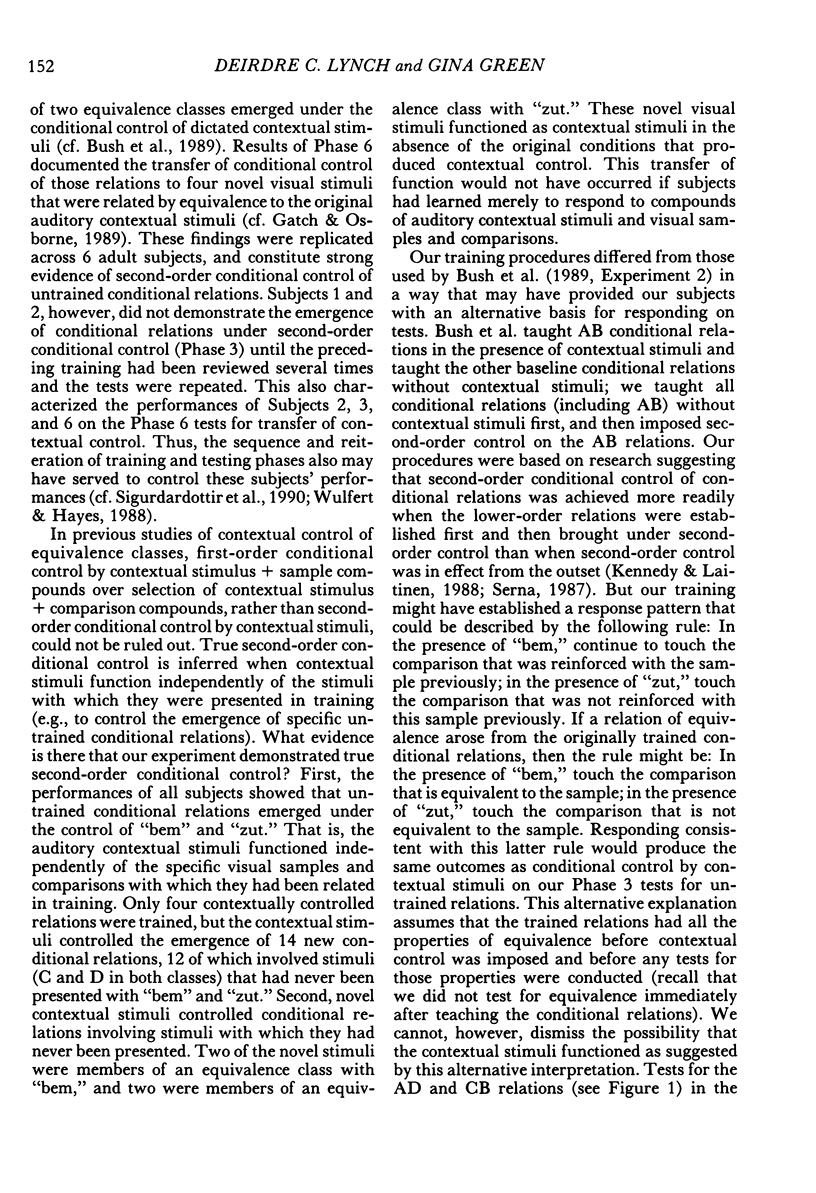
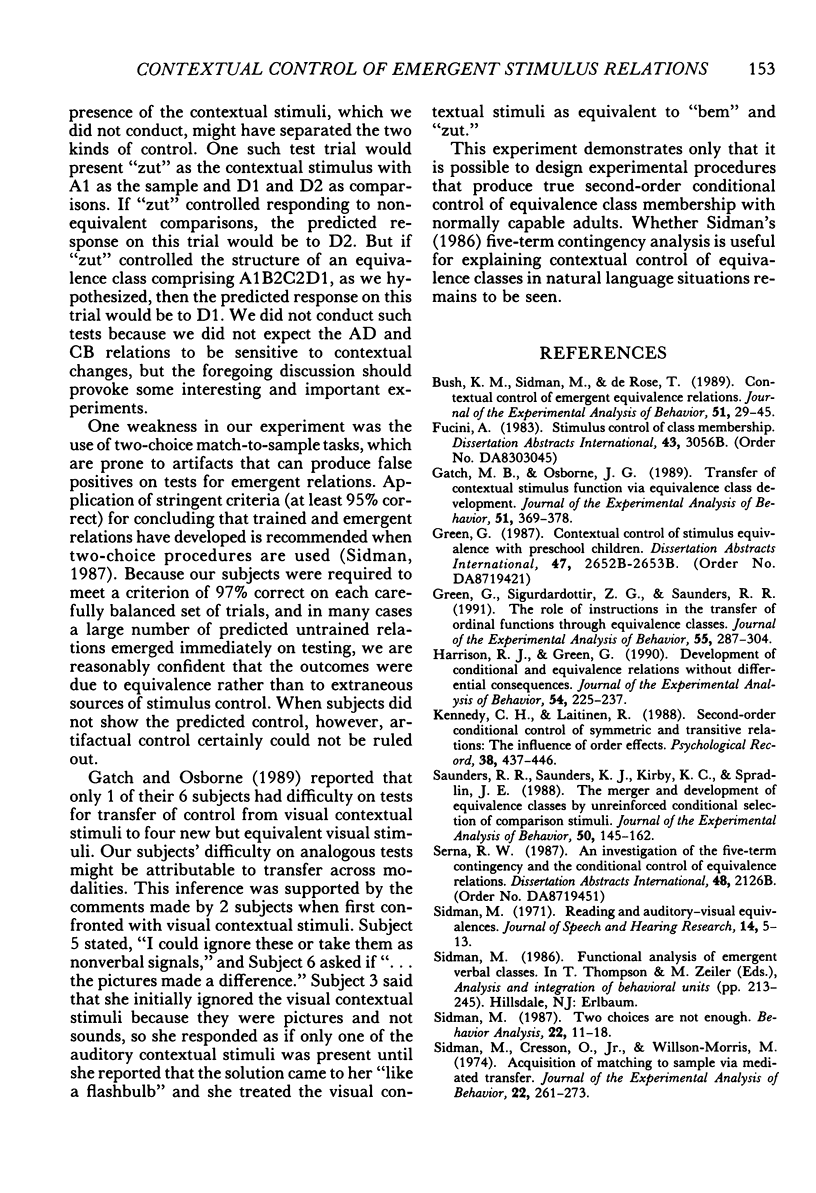

Selected References
These references are in PubMed. This may not be the complete list of references from this article.
- Bush K. M., Sidman M., de Rose T. Contextual control of emergent equivalence relations. J Exp Anal Behav. 1989 Jan;51(1):29–45. doi: 10.1901/jeab.1989.51-29. [DOI] [PMC free article] [PubMed] [Google Scholar]
- Gatch M. B., Osborne J. G. Transfer of contextual stimulus function via equivalence class development. J Exp Anal Behav. 1989 May;51(3):369–378. doi: 10.1901/jeab.1989.51-369. [DOI] [PMC free article] [PubMed] [Google Scholar]
- Green G., Sigurdardottir Z. G., Saunders R. R. The role of instructions in the transfer of ordinal functions through equivalence classes. J Exp Anal Behav. 1991 May;55(3):287–304. doi: 10.1901/jeab.1991.55-287. [DOI] [PMC free article] [PubMed] [Google Scholar]
- Harrison R. J., Green G. Development of conditional and equivalence relations without differential consequences. J Exp Anal Behav. 1990 Nov;54(3):225–237. doi: 10.1901/jeab.1990.54-225. [DOI] [PMC free article] [PubMed] [Google Scholar]
- Saunders R. R., Saunders K. J., Kirby K. C., Spradlin J. E. The merger and development of equivalence classes by unreinforced conditional selection of comparison stimuli. J Exp Anal Behav. 1988 Sep;50(2):145–162. doi: 10.1901/jeab.1988.50-145. [DOI] [PMC free article] [PubMed] [Google Scholar]
- Sidman M., Cresson O., Jr, Willson-Morris M. Acquisition of matching to sample via mediated transfer. J Exp Anal Behav. 1974 Sep;22(2):261–273. doi: 10.1901/jeab.1974.22-261. [DOI] [PMC free article] [PubMed] [Google Scholar]
- Sidman M., Kirk B., Willson-Morris M. Six-member stimulus classes generated by conditional-discrimination procedures. J Exp Anal Behav. 1985 Jan;43(1):21–42. doi: 10.1901/jeab.1985.43-21. [DOI] [PMC free article] [PubMed] [Google Scholar]
- Sidman M., Rauzin R., Lazar R., Cunningham S., Tailby W., Carrigan P. A search for symmetry in the conditional discriminations of rhesus monkeys, baboons, and children. J Exp Anal Behav. 1982 Jan;37(1):23–44. doi: 10.1901/jeab.1982.37-23. [DOI] [PMC free article] [PubMed] [Google Scholar]
- Sidman M. Reading and auditory-visual equivalences. J Speech Hear Res. 1971 Mar;14(1):5–13. doi: 10.1044/jshr.1401.05. [DOI] [PubMed] [Google Scholar]
- Sidman M., Tailby W. Conditional discrimination vs. matching to sample: an expansion of the testing paradigm. J Exp Anal Behav. 1982 Jan;37(1):5–22. doi: 10.1901/jeab.1982.37-5. [DOI] [PMC free article] [PubMed] [Google Scholar]
- Sigurdardottir Z. G., Green G., Saunders R. R. Equivalence classes generated by sequence training. J Exp Anal Behav. 1990 Jan;53(1):47–63. doi: 10.1901/jeab.1990.53-47. [DOI] [PMC free article] [PubMed] [Google Scholar]
- Thomas D. R., Schmidt E. K. Does conditional discrimination learning by pigeons necessarily involve hierarchical relationships? J Exp Anal Behav. 1989 Nov;52(3):249–260. doi: 10.1901/jeab.1989.52-249. [DOI] [PMC free article] [PubMed] [Google Scholar]
- Wulfert E., Hayes S. C. Transfer of a conditional ordering response through conditional equivalence classes. J Exp Anal Behav. 1988 Sep;50(2):125–144. doi: 10.1901/jeab.1988.50-125. [DOI] [PMC free article] [PubMed] [Google Scholar]


